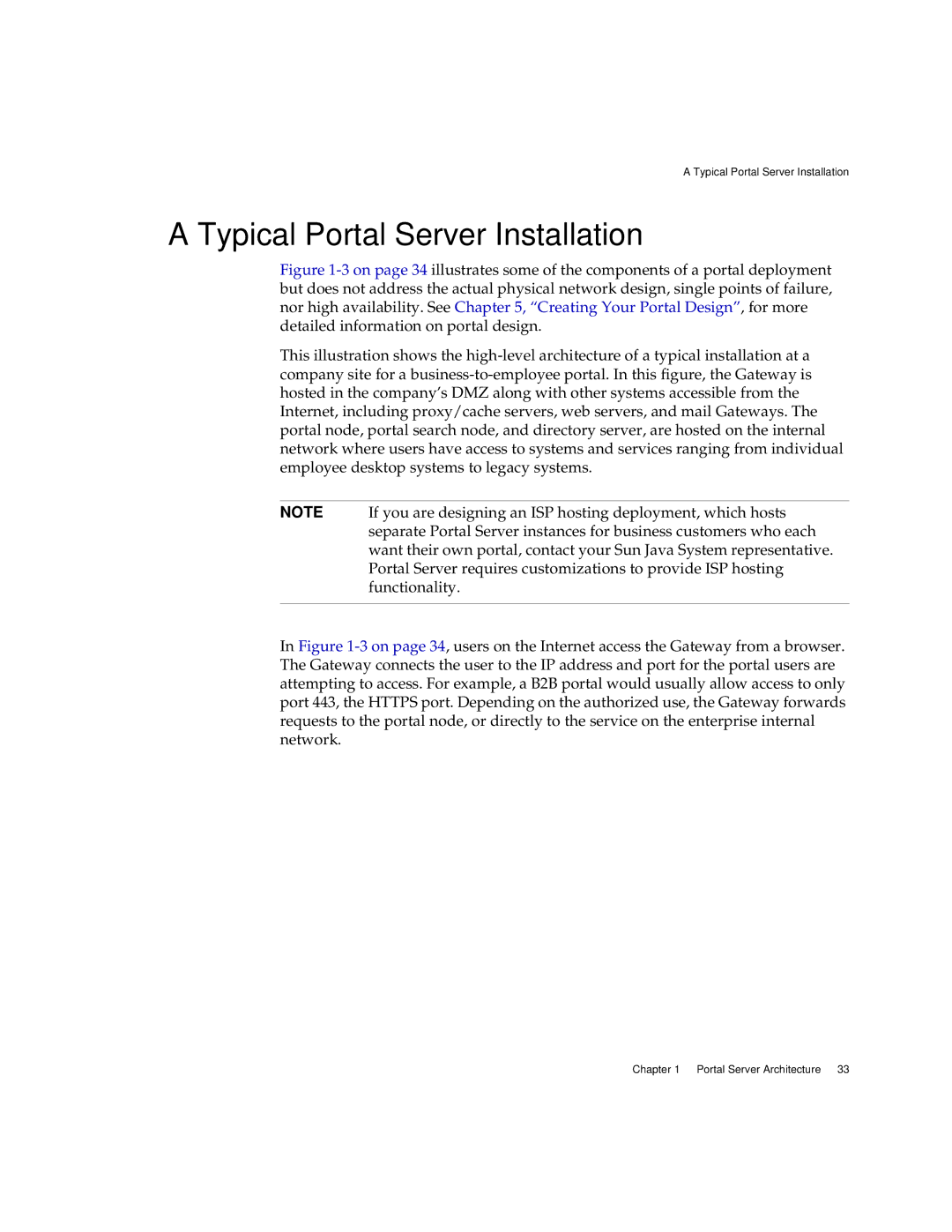
A Typical Portal Server Installation
A Typical Portal Server Installation
Figure 1-3 on page 34 illustrates some of the components of a portal deployment but does not address the actual physical network design, single points of failure, nor high availability. See Chapter 5, “Creating Your Portal Design”, for more detailed information on portal design.
This illustration shows the high-level architecture of a typical installation at a company site for a business-to-employee portal. In this figure, the Gateway is hosted in the company’s DMZ along with other systems accessible from the Internet, including proxy/cache servers, web servers, and mail Gateways. The portal node, portal search node, and directory server, are hosted on the internal network where users have access to systems and services ranging from individual employee desktop systems to legacy systems.
NOTE If you are designing an ISP hosting deployment, which hosts separate Portal Server instances for business customers who each want their own portal, contact your Sun Java System representative. Portal Server requires customizations to provide ISP hosting functionality.
In Figure 1-3 on page 34, users on the Internet access the Gateway from a browser. The Gateway connects the user to the IP address and port for the portal users are attempting to access. For example, a B2B portal would usually allow access to only port 443, the HTTPS port. Depending on the authorized use, the Gateway forwards requests to the portal node, or directly to the service on the enterprise internal network.
Chapter 1 Portal Server Architecture 33
